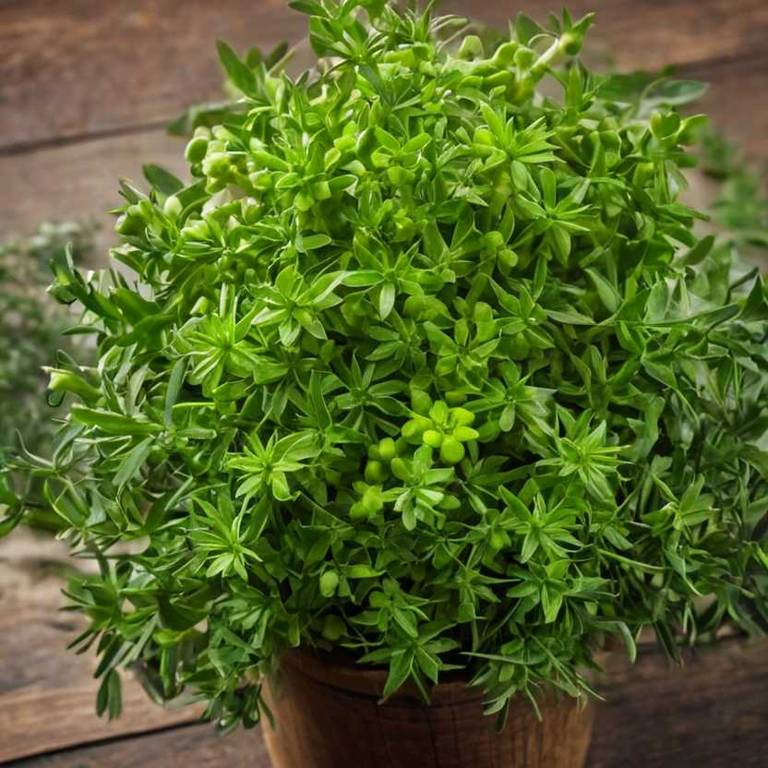By Leen Randell
Updated: Jul 06, 2024
What to know about Euphorbia pulcherrima (poinsettia) before using it medicinally

Euphorbia pulcherrima, commonly known as poinsettia, is a herb that has been extensively researched for its health properties, including its ability to reduce inflammation, improve immune function, and exhibit antibacterial and antifungal activities.
As an ornamental plant, poinsettia is widely cultivated for its striking red and green foliage, and is a popular choice for holiday decorations and landscaping. Botanically, Euphorbia pulcherrima belongs to the Euphorbiaceae family and is characterized by its succulent stems and vibrant bracts, which are actually modified leaves.
In its native Mexico, poinsettia has a long history of cultural significance, with references dating back to the Aztecs, who believed the plant had sacred healing properties.
This article explains the medicinal, horticultural, botanical, and historical aspects of Euphorbia pulcherrima.
What are the medicinal properties of Euphorbia pulcherrima?
Euphorbia pulcherrima helps with pain relief, inflammation reduction, and wound healing due to its anti-inflammatory and antiseptic properties. It is used to treat various conditions such as arthritis, fever, and skin irritations. Its extracts have also shown antimicrobial activity.
The active constituents responsible for its medicinal properties are saponins, flavonoids, and triterpenoids. These compounds have been identified as the main contributors to its anti-inflammatory, antioxidant, and antimicrobial activities. Saponins, in particular, have been shown to exhibit analgesic and anti-inflammatory effects.
The most commonly used parts of the plant for medicinal purposes are the leaves and latex sap. The latex sap contains high concentrations of saponins, which are responsible for its medicinal effects. The leaves are used to prepare infusions and decoctions for treating various conditions.
Improper use of Euphorbia pulcherrima can lead to skin irritation, allergic reactions, and gastrointestinal problems. Prolonged use of the latex sap can cause contact dermatitis, and ingestion of large amounts can cause diarrhea, nausea, and vomiting.
Precautions when using Euphorbia pulcherrima medicinally include avoiding ingestion, as it can cause gastrointestinal problems. Skin contact should be avoided, as it can cause allergic reactions. Pregnant and breastfeeding women should consult a healthcare professional before using the plant.
What are the horticulural aspects of Euphorbia pulcherrima?
Euphorbia pulcherrima grow best in temperatures between 65°F and 70°F (18°C and 21°C) with moderate watering and bright, indirect light. They thrive in USDA hardiness zones 10-12 and can be grown outdoors in warm climates.
Proper planting of poinsettia requires a well-draining potting mix and a slightly acidic pH between 6.0 and 6.5. Planting should occur in the spring or summer, and the soil should be kept consistently moist but not waterlogged. Fertilize with a balanced, water-soluble fertilizer.
For optimal harvesting, poinsettia flowers should be pruned after they have finished blooming to encourage new growth. Cut back the plant to about 4-6 inches from the base of the stem, and new bracts will form. Harvest the leaves and stems for arrangements and crafts. Leaves can be harvested year-round.
Common pests affecting poinsettia include mealybugs, spider mites, and scale. Root rot and leaf spot diseases can occur due to overwatering and poor air circulation. Regularly inspect the plant, and treat any infestations promptly to prevent spread.
What are the botanical aspects of Euphorbia pulcherrima?
Euphorbia pulcherrima is a succulent plant with oval-shaped leaves that are dark green and glossy on top, and pale green on the bottom. The leaves are arranged in an opposite decussate pattern and have a waxy texture.
Euphorbia pulcherrima belongs to the family Euphorbiaceae, order Euphorbiales, and is a member of the genus Euphorbia. It is classified as Euphorbia pulcherrima Willd. ex Klotzsch, and has several synonyms, including Euphorbia heterophylla and Euphorbia leucantha. The plant has a long history of taxonomic revisions.
The poinsettia plant has several variants, including 'Jingle Bells', 'Winter Rose', 'Cranberry Punch', and 'Monet', which have different leaf colors and patterns. The plant is also available in various sizes, from compact varieties to tall ones with up to 6 feet (1.8 meters) height. The bracts are also available in different colors.
Euphorbia pulcherrima is native to Mexico and Central America, but is now grown in many parts of the world as an ornamental plant. It is widely cultivated in the tropics and subtropics, and is also grown in greenhouses and indoor gardens in temperate regions.
The life cycle of Euphorbia pulcherrima is annual, with a growth period from spring to autumn. The plant produces small white flowers in the summer, followed by red or pink bracts that last for several months. The plant can be propagated through cuttings or seed, and has a relatively short lifespan of around 4-6 months.
What are the historical aspects of Euphorbia pulcherrima?
Euphorbia pulcherrima is a plant native to Mexico, where it has been used for centuries in traditional medicine to treat various ailments, including fever, rheumatism, and skin conditions.
In Aztec mythology, poinsettia was associated with the goddess of fertility, Ataecuna, and was believed to have been created by her tears. The plant's red and green colors were also associated with the sacred colors of the Aztec gods.
In many cultures, poinsettia is a symbol of good fortune, prosperity, and joy. In some traditions, it is also seen as a symbol of gratitude and appreciation, while in others, it is associated with love and relationships.
Poinsettia has been mentioned in several historical texts, including the 16th-century account of Spanish conquistador Bernal Diaz del Castillo, who wrote about the plant's use in traditional medicine. It has also been described by 17th-century botanist and naturalist John Banister.
Poinsettia has been depicted in various historical artifacts, including 18th-century Mexican pottery and 19th-century European paintings. In Mexico, it is also a popular motif in traditional textiles and ceramics.